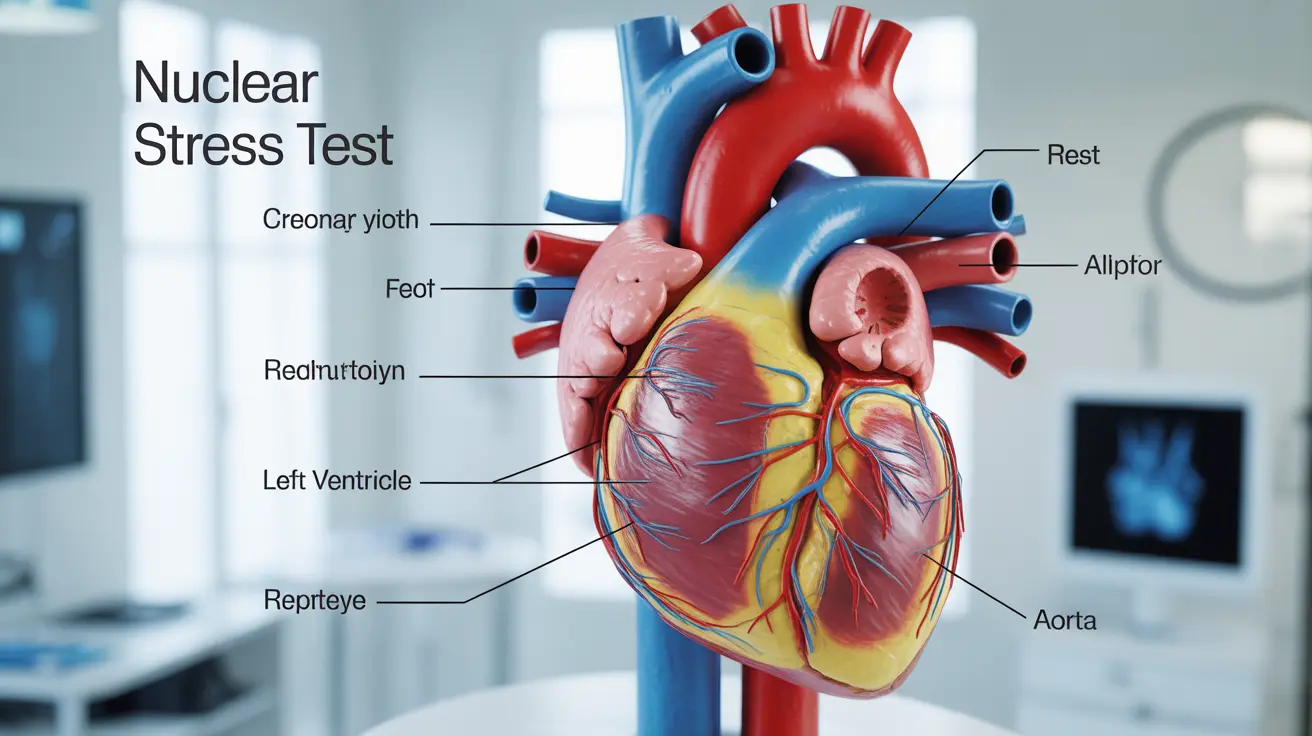For many people who need cardiac testing but can't perform physical exercise, a nuclear stress test without a treadmill offers a safe and effective alternative. This specialized cardiac diagnostic procedure uses medication instead of physical activity to evaluate heart function and blood flow, providing crucial information about cardiovascular health.
Whether you're preparing for this test or simply seeking information, understanding how a medication-based nuclear stress test works can help ease concerns and ensure the best possible experience. Let's explore everything you need to know about this important diagnostic tool.
What Is a Nuclear Stress Test Without Exercise?
A nuclear stress test without a treadmill, also known as a pharmacological nuclear stress test, uses medication to simulate the effects of exercise on your heart. This test combines nuclear imaging technology with stress-inducing medications to evaluate blood flow to your heart muscle under both rest and stress conditions.
During the procedure, healthcare providers inject a small amount of radioactive tracer into your bloodstream and use special cameras to capture detailed images of your heart. These images help doctors identify areas of reduced blood flow or damage to the heart muscle.
How the Procedure Works
The Medication Process
Instead of using physical exercise to stress your heart, healthcare providers administer medications such as adenosine, regadenoson, or dobutamine. These medications temporarily increase blood flow or make your heart beat faster and harder, mimicking the effects of physical exercise.
The type of medication used depends on various factors, including your medical history and any underlying conditions. Your healthcare team will carefully monitor your response to the medication throughout the procedure.
Imaging Technology
The test uses sophisticated nuclear imaging cameras to create detailed pictures of your heart. These images are taken both at rest and after the medication has been administered, allowing doctors to compare blood flow patterns under different conditions.
Preparing for Your Test
Proper preparation is crucial for accurate test results. Your healthcare provider will give you specific instructions, which typically include:
- Fasting for 4-6 hours before the test
- Avoiding caffeine for 24-48 hours before the procedure
- Temporarily stopping certain medications as directed by your doctor
- Wearing comfortable clothing and avoiding jewelry
- Bringing a current list of medications
Who Needs This Type of Stress Test?
A nuclear stress test without a treadmill is particularly beneficial for people who:
- Have difficulty walking or exercising due to arthritis, injury, or other physical limitations
- Experience chronic lung conditions that make exercise challenging
- Have neurological conditions affecting mobility
- Are unable to reach target heart rates through exercise
- Have certain medical conditions that make exercise stress testing unsafe
Frequently Asked Questions
What is a nuclear stress test without a treadmill and how does it work for people who can't exercise?
A nuclear stress test without a treadmill uses medication to simulate exercise effects on your heart. The procedure involves injecting a radioactive tracer and medication that increases blood flow, allowing doctors to capture detailed images of your heart's function without requiring physical activity.
What medications are used for a nuclear stress test without exercise, and what are the possible side effects?
Common medications include adenosine, regadenoson, and dobutamine. Side effects may include temporary chest discomfort, shortness of breath, headache, or flushing. These effects typically resolve quickly once the medication is stopped.
How do you prepare for a nuclear stress test without a treadmill, and are there any foods or medications to avoid beforehand?
Preparation includes fasting for 4-6 hours, avoiding caffeine for 24-48 hours, and temporarily stopping certain medications as directed by your doctor. Your healthcare provider will provide a detailed list of foods and medications to avoid before the test.
Who should get a nuclear stress test without a treadmill instead of the regular exercise test?
This test is recommended for people who cannot perform physical exercise due to physical limitations, chronic conditions, or medical restrictions that make traditional stress testing unsafe or impractical.
How long does a nuclear stress test take when you use medication instead of a treadmill, and what can I expect during the procedure?
The entire procedure typically takes 3-4 hours. You'll receive injections of the radioactive tracer and stress medication, undergo two sets of imaging (rest and stress), and be monitored throughout. The actual stress portion usually lasts about 15-20 minutes.




